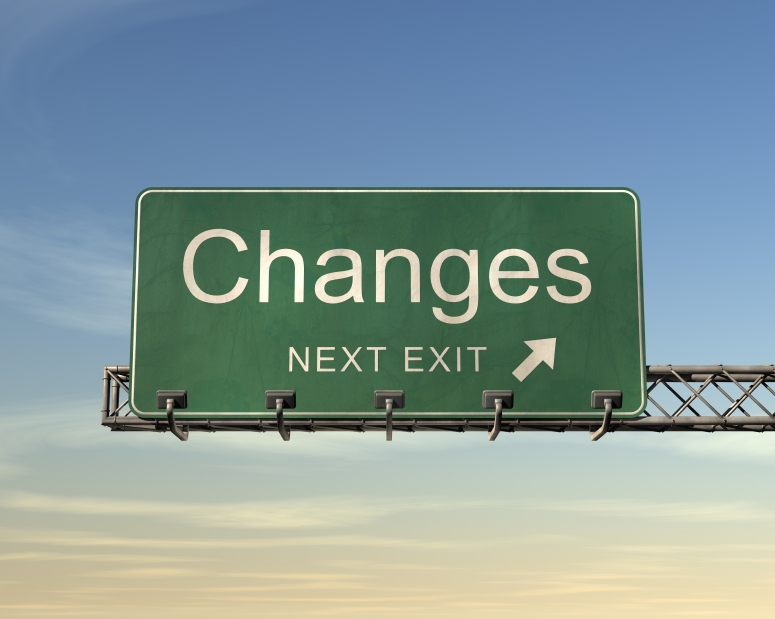Dr. Dawn-Marie Turner
You may have heard the statistics, 50-70% of organizational change initiatives fail. Your organization is facing big changes, and you don’t want it to become another statistic. So, you decide this time it’s going to be different. You send your managers and leaders for change management training and adopt a change management methodology. You think, I’ve done my part. Now things will be different.
Yet, your employees are still slow to buy-in, maybe even skeptical. They question the training and whether it will really make a difference. Exasperated, you conclude they really are resistant to change. So, you push harder to get the change implemented.
The problem isn’t resistance to change. The problem is your organizational muscle memory.
What is Muscle Memory?
Several years ago, I decided to learn how to play the piano. I had always wanted to learn. I envisioned sitting at the piano playing some of my favourite music. The reality was much different.
It didn’t take long before I became frustrated. There was no beautiful music coming from my piano. Instead it sounded like unconnected pings on a cell phone. I couldn’t read the notes or find and play the keys, all at the same time. My piano teacher, Mary, was incredibly patient. She simply reminded me that I needed time. I had not yet developed muscle memory.
Muscles don’t have actual memory cells. Muscle memory refers to the embedded learning that occurs as a result of repeated practice or exposure to a situation. If you’ve ever ridden a bike, driven stick shift, or laced up skates after years from your last ride, drive, or game, that’s muscle memory.
Your employees have muscle memory too. Especially when it comes to organizational change. Your organization’s history with change is its muscle memory. Your history with change has shaped your employees’ beliefs and assumptions about change. Your organization’s employees, (including its leaders, managers, and other stakeholders), have an embedded and often unconsciously learned response to change.
It is based on how your organization has approached and handled all previous changes.
A History of Fear and Distrust
Your history affects everyone, from the CEO right to the frontline employees. If you have a history of failed changes, changes that start and then just stop, or changes that are forcibly pushed through, your people have learned to fear change.
Employees fear the consequences, uncertainty, and loss that comes with change. Leaders and managers fear the conflict, the sense of frustration, and the potential consequences of not being able to move the organization where it needs to go.

Researchers found, in a study exploring openness to change, an organization’s history creates a self-fulfilling prophecy. Organizations with a history of failed or poorly led changes lead to higher levels of employee cynicism and distrust of executive management. Distrust leads to reluctance to engage with subsequent changes. This continues the cycle of failed changes with employees being labelled as resistant to change.
Breaking the cycle of failed change requires a willingness to create a new history.
Creating a New History of Change
Muscle memory is a powerful tool for retaining learning. It’s also one of the things that can hold us back. Our learned responses can make us fearful to try new things and cause us to repeat past mistakes. Reshaping that memory takes time. It also takes a commitment to do things differently, and willingness to acknowledge past mistakes.
The first step in overcoming your organization’s history with change and preventing resistance is to acknowledge its existence.
Why Your Past History Is Important
- First it’s easy to forget the way previous events shape current events.
- Second, it’s easy to forget continuities, to ignore aspects of the past that have not changed and are still influencing current thinking.
Next is to ensure your leaders have the knowledge, skill, confidence, and authority
to lead and facilitate change. In many situations of failed change, the employees agreed and supported the change. It was the way it was approached and led that caused it to fail.
Research has shown the existing skills that are needed and appropriate for operational or professional roles are not sufficient for managing a change event or situation.
Training alone is not enough.
Once trained, your leaders need an environment that supports and enables them to integrate the principles and activities into their daily leadership practices. In our Living and Leading Change course we help leaders to integrate the practices. We encourage them to stop doing change management as a task to be completed and start enabling organizational change.
The third step is to practice active patience. This is the patience to allow a change to move at the pace of readiness, while actively engaging and supporting people through the change process. Your organizational change muscle memory wasn’t created with just one change. It won’t be re-created with just one change either, but it can be with one change at a time.
If you liked this article make sure you join the community to stay up to date with all things change management!
Turner Change Management – Think Transition: Turn change from a liability to an asset

How to help your employees when positions are being deleted, but they’re not being let go
 https://thinktransition.com/wp-content/uploads/Female-manager-j0285126.jpg
394
600
Amanda Turner
https://thinktransition.com/wp-content/uploads/Turner-Change-Management-logo-1.jpg
Amanda Turner2017-04-18 11:00:282025-02-04 16:50:25Prepare Your Middle Managers to Lead and Manage Change
https://thinktransition.com/wp-content/uploads/Female-manager-j0285126.jpg
394
600
Amanda Turner
https://thinktransition.com/wp-content/uploads/Turner-Change-Management-logo-1.jpg
Amanda Turner2017-04-18 11:00:282025-02-04 16:50:25Prepare Your Middle Managers to Lead and Manage Change https://thinktransition.com/wp-content/uploads/iphone-518101_1280.jpg
853
1280
dawnmarie
https://thinktransition.com/wp-content/uploads/Turner-Change-Management-logo-1.jpg
dawnmarie2017-02-21 01:00:572025-02-04 17:11:09Do You Know the Most Difficult Part of Any Change?
https://thinktransition.com/wp-content/uploads/iphone-518101_1280.jpg
853
1280
dawnmarie
https://thinktransition.com/wp-content/uploads/Turner-Change-Management-logo-1.jpg
dawnmarie2017-02-21 01:00:572025-02-04 17:11:09Do You Know the Most Difficult Part of Any Change?
Six Characteristics of Healthy Organizational Change
 https://thinktransition.com/wp-content/uploads/2016-July-30-Dolphins-Campbell-River-BC.jpg
900
1200
Amanda Turner
https://thinktransition.com/wp-content/uploads/Turner-Change-Management-logo-1.jpg
Amanda Turner2016-08-25 11:46:412019-07-26 18:24:043 Things A Whaler and a Change Leader Have in Common
https://thinktransition.com/wp-content/uploads/2016-July-30-Dolphins-Campbell-River-BC.jpg
900
1200
Amanda Turner
https://thinktransition.com/wp-content/uploads/Turner-Change-Management-logo-1.jpg
Amanda Turner2016-08-25 11:46:412019-07-26 18:24:043 Things A Whaler and a Change Leader Have in Common https://thinktransition.com/wp-content/uploads/2012/08/iStock_000005461904Small.jpg
619
775
dawnmarie
https://thinktransition.com/wp-content/uploads/Turner-Change-Management-logo-1.jpg
dawnmarie2016-07-28 05:08:462025-02-04 17:21:37Oh No! Don’t Yo-Yo: Three Actions for Creating Sustainable Change
https://thinktransition.com/wp-content/uploads/2012/08/iStock_000005461904Small.jpg
619
775
dawnmarie
https://thinktransition.com/wp-content/uploads/Turner-Change-Management-logo-1.jpg
dawnmarie2016-07-28 05:08:462025-02-04 17:21:37Oh No! Don’t Yo-Yo: Three Actions for Creating Sustainable Change
Three reasons to stop trying to project manage change
 https://thinktransition.com/wp-content/uploads/2016-March-30-whats-your-story-chalkboard-620316_1280.jpg
853
1280
dawnmarie
https://thinktransition.com/wp-content/uploads/Turner-Change-Management-logo-1.jpg
dawnmarie2016-03-31 14:00:002025-02-04 17:27:01The Value of Storytelling in Organizational Change
https://thinktransition.com/wp-content/uploads/2016-March-30-whats-your-story-chalkboard-620316_1280.jpg
853
1280
dawnmarie
https://thinktransition.com/wp-content/uploads/Turner-Change-Management-logo-1.jpg
dawnmarie2016-03-31 14:00:002025-02-04 17:27:01The Value of Storytelling in Organizational Change https://thinktransition.com/wp-content/uploads/colleagues-digital-device-discussion-1437540.jpg
1279
1920
dawnmarie
https://thinktransition.com/wp-content/uploads/Turner-Change-Management-logo-1.jpg
dawnmarie2016-03-30 11:11:392025-02-04 17:48:09Who Benefits from Change Management?
https://thinktransition.com/wp-content/uploads/colleagues-digital-device-discussion-1437540.jpg
1279
1920
dawnmarie
https://thinktransition.com/wp-content/uploads/Turner-Change-Management-logo-1.jpg
dawnmarie2016-03-30 11:11:392025-02-04 17:48:09Who Benefits from Change Management?



Leave a Reply
Want to join the discussion?Feel free to contribute!